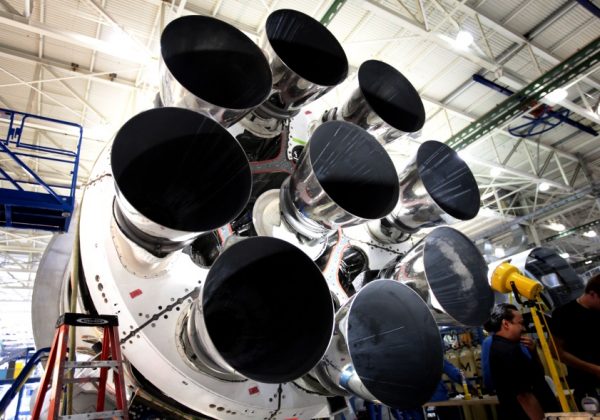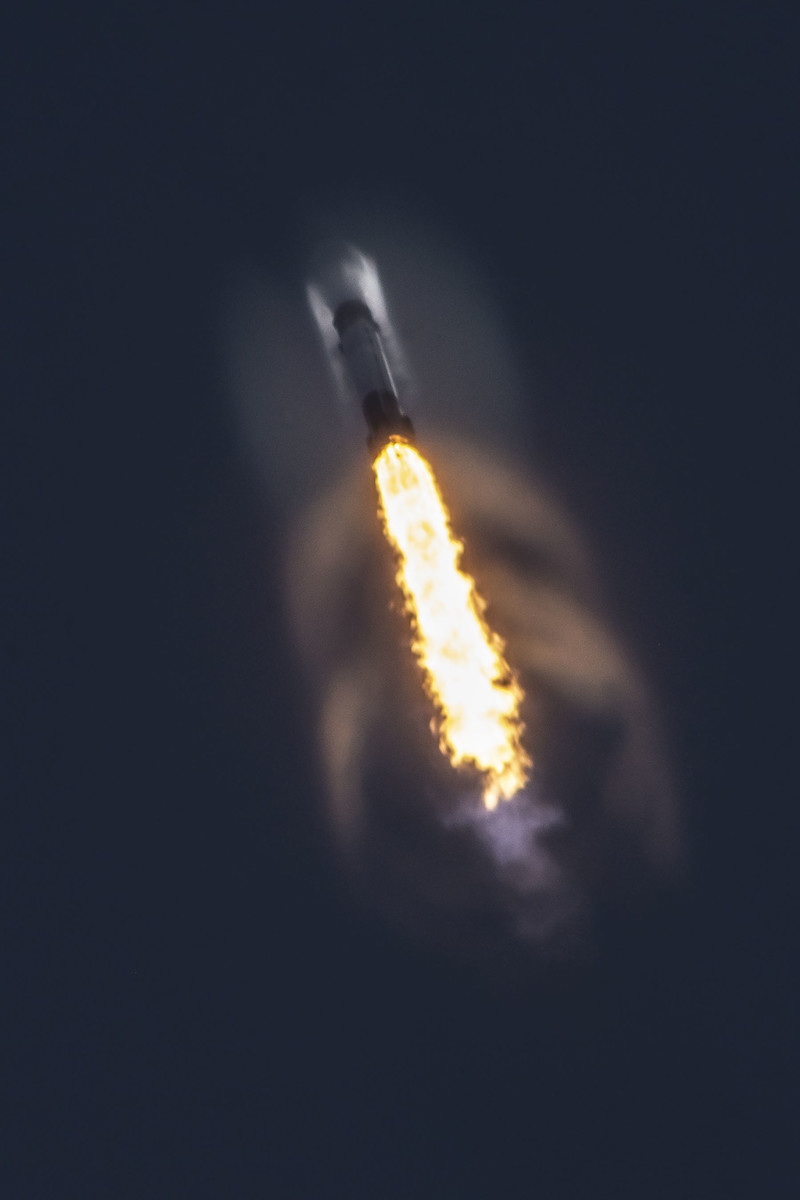NASA, US military reviewing SpaceX engine malfunction – Spaceflight Now

NASA and U.S. military officials are reviewing a malfunction that triggered a premature engine shutdown during a flight of a SpaceX Falcon 9 rocket earlier this month, a cautionary step before upcoming launches with a GPS navigation satellite and astronauts on SpaceX’s Crew Dragon spacecraft.
A NASA spokesperson said Tuesday that SpaceX requested participation in the engine investigation from the agency’s Commercial Crew Program and Launch Services Program. SpaceX is leading the inquiry, but representatives from both NASA programs will join the investigation.
One of nine first stage Merlin 1D engines shut down prematurely during a Falcon 9 launch March 18 from Cape Canaveral. The launcher overcame the engine malfunction by firing its other engines a little longer, and the Falcon 9 was able to deploy 60 satellites for SpaceX’s Starlink Internet network into the mission’s targeted orbit.
Elon Musk, SpaceX’s founder and CEO, tweeted after the launch that the company would conduct a “thorough investigation” of the engine malfunction before the next Falcon 9 launch.
The in-flight engine failure on the March 18 launch marked the second time a Merlin engine has prematurely shut down on a Falcon 9 flight.
In October 2012, a Merlin 1C engine — a predecessor to the Merlin 1D — failed during the launch of a Dragon supply ship on the way to the International Space Station. The Falcon 9 was still able to deliver the Dragon spacecraft into orbit, but the failure resulted in the loss of an Orbcomm data relay satellite riding as a secondary payload.
SpaceX has reported no other in-flight Merlin engine failures in hundreds of engine flights. Falcon 9 rockets are designed to reach orbit even if it loses an engine during ascent, making it unique among active launchers.
The Falcon 9’s first stage booster also missed a landing on SpaceX’s offshore drone ship after the March 18 launch. SpaceX has not confirmed if the landing mishap was related to the engine outage during ascent.
The booster used on the March 18 launch was making its fifth launch, a record for SpaceX.
“SpaceX is including … (NASA) representatives in its investigation into the March 18 engine anomaly,” said Josh Finch, a NASA spokesperson, in a written statement.
NASA awarded SpaceX a $2.6 billion contract in 2014 to develop, test and fly the Crew Dragon spacecraft, a human-rated capsule designed to ferry astronauts to and from the International Space Station. Boeing has a similar contract with NASA for its CST-100 Starliner spacecraft.
Finch said SpaceX is required to “available to NASA all data and resulting reports” under the terms of the the commercial crew contract.
“SpaceX, with NASA’s concurrence, would need to implement any corrective actions found during the investigation related to its commercial crew work prior to its flight test with astronauts to the International Space Station,” Finch said. “NASA and SpaceX are holding the current mid-to-late May launch timeframe, and would adjust the date based on review of the data, if appropriate.”

Officials from the U.S. Space Force, meanwhile, are also “engaged” with SpaceX during the company’s probe of the premature engine shutdown, according to Col. Robert Bongiovi, head of the launch enterprise division at the Space and Missile Systems Center.
SpaceX’s next launch with a U.S. military payload is scheduled for April 29, when a Falcon 9 is set to loft a GPS navigation satellite into space from Cape Canaveral.
“I will say that for every one of our national security space launches, we review any issues or anomalies from a fleet-wide perspective,” he said Tuesday. “So we are closely engaged with SpaceX on what transpired on that launch, and working to understand it to make sure that when we put a national security satellite on top of a launch vehicle that it will achieve orbit.”
Bongiovi said such inquiries are a normal course of business for the military’s oversight of national security launch contractors.
SpaceX and United Launch Alliance are the military’s two incumbent national security space launch providers certified to carry the Defense Department’s highest-priority — and most expensive — satellites into orbit.
“We do that with all providers,” he said. Military officials regularly assess “test discoveries” and other data from launch providers.
“That’s not a different process,” Bongiovi said. “It’s just another set of data that we’re working with to get to that (GPS) launch.”
He said the GPS launch remains on schedule for late April for now, but the teams are approaching a decision on whether to fuel the spacecraft, which is inside a clean room at an Astrotech payload processing facility in Titusville, Florida, near the launch pad at Cape Canaveral Air Force Station.
“The satellite is about to fuel, and that’s a major decision point,” Bongiovi said. “So I think it’s prudent on our part to be looking at the situation and whether we want to proceed, and that’s what we’re doing. But today it remains on schedule for the end of April.”
He said the engine issue is “treated like we treat every other issue on every other flight” conducted by SpaceX or ULA.
“We make sure we understand what happened and whether that’s an issue that needs to be resolved, or something we proceed with,” Bongiovi said.
The coronavirus pandemic is another factor military teams may consider when they decide whether to move forward with the GPS launch in late April.
Officials from the 45th Space Wing, the military unit that operates the launch range at Cape Canaveral, say they plan to keep the base open for launches.
Brig. Gen. Doug Schiess, the wing commander, said earlier this week that he has reduced staff on range operations teams to just essential personnel. Range teams are practicing social distancing techniques and working on alternating launches to minimize their risk of exposure to the COVID-19 viral disease, and public launch viewing sites have been closed for the planned launch of a United Launch Alliance Atlas 5 rocket Thursday.
But the range team is just one segment of a broader group of employees from contractors, launch providers and satellite technicians required for a launch, some of whom need to travel from other states and countries.
For example, the Lockheed Martin-built GPS satellite was built at a facility in Colorado, and teams there have traveled to Florida to help prepare the spacecraft for launch.
SpaceX’s next launch from Cape Canaveral had been scheduled for March 30 with Argentina’s SAOCOM 1B radar observation satellite. But Argentine officials have postponed due the coronavirus pandemic. Among other concerns, Argentine personnel needed to support the launch were unable to travel to Florida.
Email the author.
Follow Stephen Clark on Twitter: @StephenClark1.






